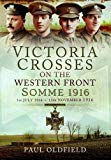Battle of the Ancre, 13-19 November 1916
The battle of the Ancre, 13-19 November 1916, was the final phase of the first battle of the Somme. It involved an attack on the German front line as it crossed the Ancre River, a sector of the front that had first been attacked on the first day of the battle without success. The attack along the Ancre had originally been planed for 15 October, as part of the battle of the Ancre Heights, but had been postponed repeatedly by bad weather. By November the original plan had been reducing in scope from an attempt to push the Germans back up to five miles along the Ancre to one to capture Beaucourt and push the Germans back at most two miles.
This was a strong sector of the German front. The first British objective involved an advance of 800 yards and would require the capture of at least three lines of trenches. The next target was the German second line, from Serre south to the Ancre. Finally it was hoped to capture Beaucourt, on the Ancre.
The attack would be launched by II Corps south of the river and V Corps to the north, with V Corps carrying out the main offensive. The attack immediately north of the river was to be carried out by the 63rd (R.N.) Division, under Major-General C. D. Shute. This was the first time they had taken part in an attack on the Western Front, and so extra care was taken to make sure everybody knew what was expected of them. Amongst their officers was Lieutenant-Colonel B. C. Freyberg, later to hold high command in the Second World War, who commanded the Hood Battalion (the Naval battalions were named after famous sailors – Hood, Drake, Nelson and Hawke). The division captured the German front line despite heavy German resistance.
Further north the attack made less progress, and so despite Freyberg’s optimism the attack on Beaucourt was delayed until the next day. 51st Division captured Beaumont Hamel, and 2nd Division managed to capture parts of Redan Ridge, but further north no progress was made.
The attack was renewed on 14 November. This time the 63rd Division was able to secure Beaucourt, which fell at 10.30am. The success at Beaucourt encouraged Gough to plan for a more ambitious offensive, but Haig ordered him to wait until after he could return from the Chantilly Conference of 15-16 November.
One final attack was made, on 18-19 November. This began in snow and sleet and descended into chaos. On the right of the line the 4th Canadian Division captured its first objectives, but elsewhere little was achieved.
The attack was a relative success. Beaumont Hamel and Beaucourt were captured, but Serre and the northern part of the German line remained untouched. Once again mud intervened to help the defenders, preventing the use of the few available tanks, and making all communication difficult. All the early successes on the Ancre achieved was the creation of a British held salient on the Ancre, which proved to be a very dangerous area to be posted over the winter of 1916-17.
Amongst the casualties on the Ancre was the writer H.H. Munro, better known as Saki, killed by a sniper’s bullet on 14 November during the attack on Beaumont Hamel.
How to cite this article:
Rickard, J (20 September 2007), Battle of the Ancre, 13-19 November 1916 , http://www.historyofwar.org/articles/battles_ancre.html
 Victoria Crosses on the Western Front - Somme 1916, 1 July 1916-13 November 1916, Paul Oldfield.
Splits the story into two halves, first a series of narratives of the various stages of the battle looking at the context of how the VCs were won, and then a longer section of biographies, covering the lives of VC holders themselves as well as their families. The first half provides a readable narrative of the battle and it’s Victoria Crosses, the second half is much more of a reference work(Read Full Review)
Victoria Crosses on the Western Front - Somme 1916, 1 July 1916-13 November 1916, Paul Oldfield.
Splits the story into two halves, first a series of narratives of the various stages of the battle looking at the context of how the VCs were won, and then a longer section of biographies, covering the lives of VC holders themselves as well as their families. The first half provides a readable narrative of the battle and it’s Victoria Crosses, the second half is much more of a reference work(Read Full Review)